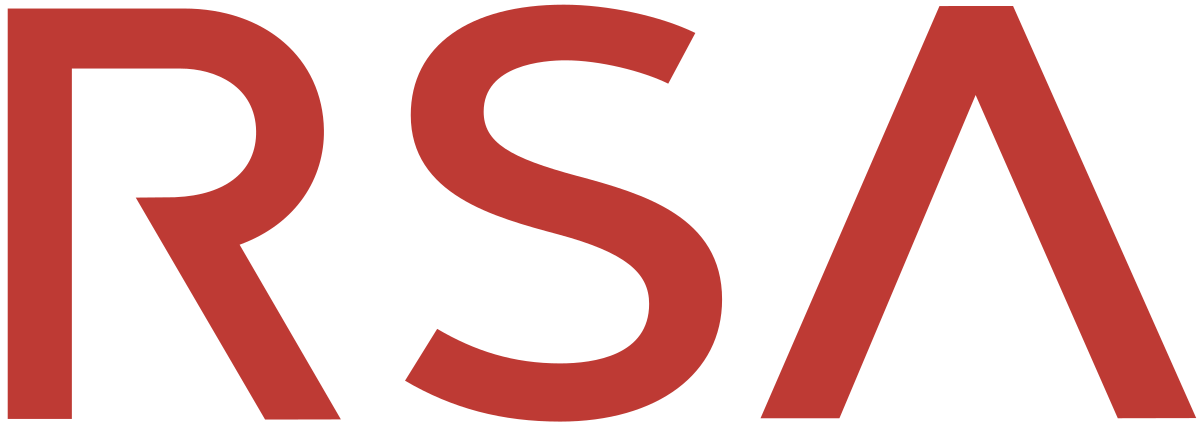RSA: meaning and operation of the algorithm
At its core, RSA is a public-key cryptography system (asymmetric encryption) that uses two different but mathematically linked keys, consisting of a public key and a private key. This is very different from symmetric encryption, where only a secret key is shared. RSA, on the other hand, uses a key pair. What is encrypted with one key can only be decrypted with the other key.
RSA in practice
In practice, this means that you can encrypt a message with an RSA public key so that only the intended recipient and their associated private key can read it. Thanks to this feature, RSA offers confidentiality: no one can just read along.
RSA also works in the opposite direction. A message encrypted with a private key can only be decrypted with the corresponding public key, which is used for digital signatures, for example. As a result, RSA not only guarantees confidentiality, but also integrity and authenticity. This is how it works: In practice, digital signatures do not encrypt the entire message, but a hash of it. That hash is signed with the private key so that recipients with the public key can verify that the message is authentic and unchanged. If the content matches, you can be sure that the message was not tampered with and that you received the original message. In other words, you can check with RSA whomsoever sent a message and that it hasn't changed along the way.
Where do you find RSA encryption?
RSA is one of the oldest and most used algorithms in cryptography. It forms the basis of countless security protocols on the Internet. Think TLS/SSL (the lock in your browser), SSH for server access, PGP for encrypted email, and digital certificates that authenticate software or users. Chances are that every time you log into a secure website or set up a VPN connection, RSA encryption runs in the background to keep the connection secure. No wonder, then, that RSA encryption has become synonymous with secure digital communication. The RSA algorithm is so widespread because it answers that crucial question: “Can I trust this person or service?”. Something we have to deal with every day when it comes to access and identity management.
RSA Cryptography in Identity & Access Management
At first glance, RSA cryptography and Identity Governance two different worlds: one is about math and keys, the other about accounts and rights. But in practice, they are inextricably linked. Identity & Access Management (IAM), and its governance, relies heavily on reliable security one on evidence that everything is under control. RSA technology plays a dual role in this.
First, RSA provides the technical basis for secure identity verification. Many IAM solutions use RSA-like algorithms to issue authentication tokens or certificates, for example. For example, the well-known RSA SecurID token (which many organizations use for two-factor authentication) is part of the RSA portfolio. Such a token generates a code that only works in combination with the associated server. Under the hood, RSA cryptography ensures that code is unique and unguessable. Digital signatures that are used to authorize login requests, API calls, or documents are also often based on RSA. This allows you to be confident that an admin command or change request really comes from the right person and not from a malicious person, thanks to the mathematical trust that the RSA encryption method offers.
From algorithm to security company
Secondly, RSA is a symbol of security governance: managing risks related to digital access. RSA is not only an algorithm, but also the namesake of the security company that specializes in identity and security. Over the years, RSA (the company) translated its cryptographic expertise into Identity Governance & Administration (IGA) solutions. In other words, RSA's technology is not limited to encrypting data, but also helps organizations get a grip on whomsoever has access to what. This is where RSA meets Identity Governance. Encrypting data is step one, but step two is making sure that only the right people, with the right rights and keys, can access that data.
Control access risks with RSA Governance & Lifecycle
Regulations and good practices highlight the convergence of cryptography and identity governance. For example, the new EU law DORA (Digital Operational Resilience Act) recognizes that without secure and robust identity systems, no organization can guarantee its continuity. In other words: if you lose control of identities, you lose control of your company. Cryptography such as RSA ensures that identities and sessions are technically secured, while governance ensures that the right processes are in place.
The biggest process-based challenge for many organizations is not the create of accounts and granting rights, but rather maintaining and disabling them over time. This is where the infamous orphaned accounts and permission sprawl come in. Identity Governance is about managing these risks: making sure that no one has unauthorised access and that rights do not grow continuously without supervision. RSA Governance & Lifecycle is a platform built for exactly this.
Why does Aumatics choose RSA as a partner?
You may be wondering: there are various IGA solutions on the market, why do we at Aumatics specifically work with RSA Governance & Lifecycle? The answer is simple: reliability, completeness and focus on security. RSA's solution is the result of decades of experience in cryptography, cyber security and identity management. In practice, we notice that this tool fills exactly the gaps that other platforms (e.g. a basic solution such as Microsoft Entra ID Governance) leave behind. Here we go in this article delve deeper.
First, RSA Governance & Lifecycle offers a more extensive integration in hybrid environments. Many organizations use a mix of on-premises applications, legacy systems, and cloud services. RSA connects effortlessly to this and brings all these environments together in one IGA platform.
In addition, RSA Governance & Lifecycle gives you in-depth control over access control and compliance. Think of smart SOD checks, access risk values and workflows that suit your processes. Everything is aimed at being demonstrably in control with reports that auditors understand. Every day, Aumatics sees how this approach means less manual work, less stress and more grip.
Conclusion: more control over rights, fewer concerns with RSA
So RSA is more than a famous algorithm from the 1970s. It is the basis of modern security and the name behind a powerful platform for identity governance. We've explained what RSA is, the meaning and operation of RSA encryption to how this technology is intertwined with Identity Governance & Administration. For organizations that struggle with orphaned accounts, permission sprawl and labor-intensive compliance checks, RSA's Governance & Lifecycle is a proven solution for getting back in control. It combines the reliability of robust RSA cryptography with practical tools to automate access control, reduce risks, and effortlessly pass audits.
Wondering what this looks like for your organization? Plan one exploratory conversation from 30 — 45 minutes with our team. We'd love to show you how to get a grip on all accounts and rights with RSA Governance & Lifecycle
Frequently asked questions about this topic
What is RSA Encryption?
RSA encryption is an asymmetric cryptography system developed by Rivest, Shamir, and Adleman in 1977 that uses two mathematically linked keys: a public key to encrypt messages and a private key to decrypt them. RSA is used worldwide for secure Internet communications, including HTTPS connections, VPNs, digital signatures, and email encryption. The big advantage is that the public key can be shared freely without compromising security.
How does RSA encryption work?
RSA encryption works with a key pair: what is encrypted with the public key can only be decrypted with the private key and vice versa. For confidential communication, encrypt a message with the recipient's public key so that only that person can read it with their private key. For digital signatures, a hash of the message is signed with the private key, and then recipients can verify with the public key that the message is authentic and unchanged.
What is Identity Governance?
Identity Governance (also known as Identity Governance & Administration or IGA) is the process of managing and controlling who has access to which systems and data within an organization. It includes automating access control, performing periodic access reviews, detecting risky rights such as orphaned accounts, and demonstrating compliance to auditors. Identity Governance ensures that only the right people have access to sensitive information at the right time and prevents security risks through uncontrolled growth of user rights.




